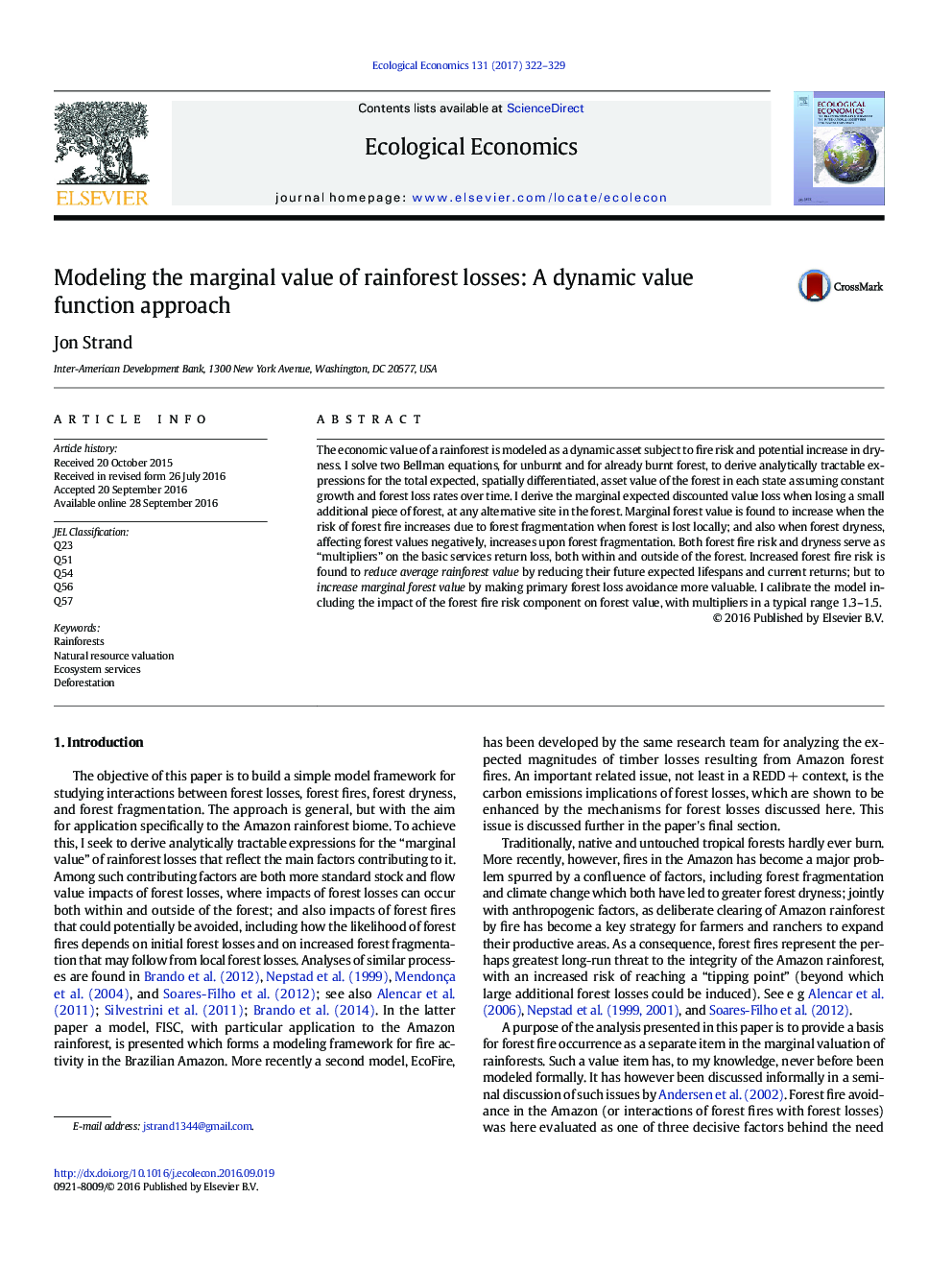| کد مقاله | کد نشریه | سال انتشار | مقاله انگلیسی | نسخه تمام متن |
|---|---|---|---|---|
| 5048878 | 1476348 | 2017 | 8 صفحه PDF | دانلود رایگان |
- This paper provides the first analytically coherent analysis of factors affecting the value of marginal forest losses, focusing on tropical rainforests.
- Total and marginal forest value is modeled as a dynamic asset value, in continuous time.
- Marginal forest value is a function of changes present discounted flow returns both inside and outside of the forest area, in response to a small “patch” of forest being lost.
- It is found that the prevalence of forest fires increases the marginal forest value due to the negative externality effect of forest loss on fire, due to forest fragmentation, working mainly at the micro forest level.
- Marginal forest value is also found to be enhanced by the factor that forest loss increases forest dryness, which in turn reduces average forest values, and increases forest fire risks.
The economic value of a rainforest is modeled as a dynamic asset subject to fire risk and potential increase in dryness. I solve two Bellman equations, for unburnt and for already burnt forest, to derive analytically tractable expressions for the total expected, spatially differentiated, asset value of the forest in each state assuming constant growth and forest loss rates over time. I derive the marginal expected discounted value loss when losing a small additional piece of forest, at any alternative site in the forest. Marginal forest value is found to increase when the risk of forest fire increases due to forest fragmentation when forest is lost locally; and also when forest dryness, affecting forest values negatively, increases upon forest fragmentation. Both forest fire risk and dryness serve as “multipliers” on the basic services return loss, both within and outside of the forest. Increased forest fire risk is found to reduce average rainforest value by reducing their future expected lifespans and current returns; but to increase marginal forest value by making primary forest loss avoidance more valuable. I calibrate the model including the impact of the forest fire risk component on forest value, with multipliers in a typical range 1.3-1.5.
Journal: Ecological Economics - Volume 131, January 2017, Pages 322-329
